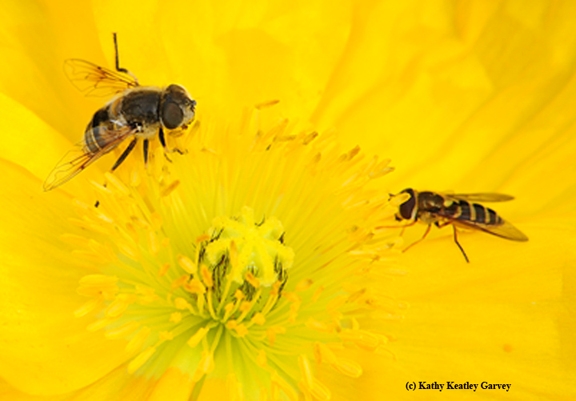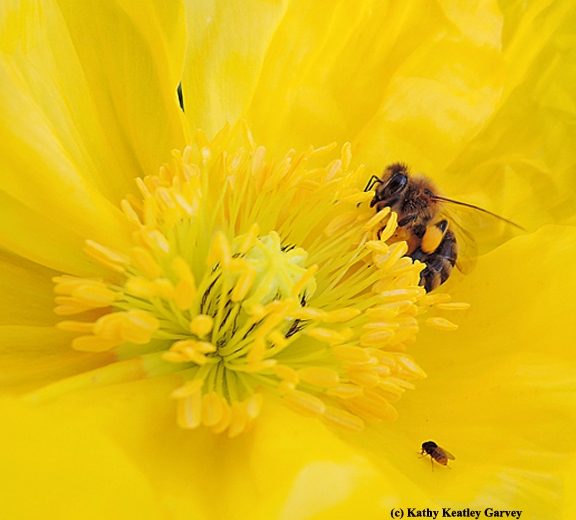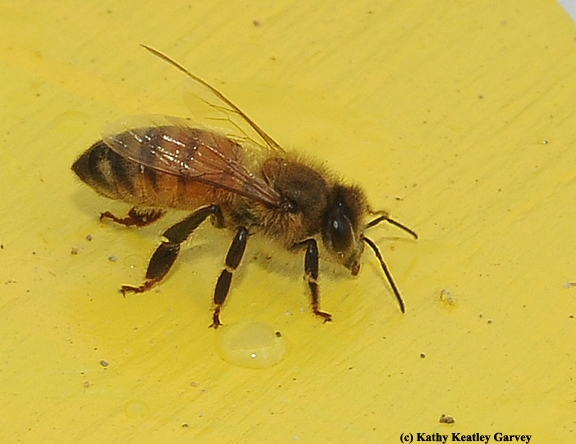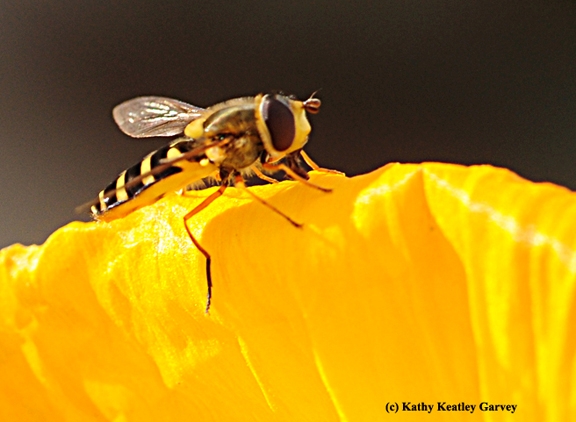If there's one thing that entomologists hate, it's journalists who mistake a fly for a bee.
To entomologists, it's like mistaking a referee for a football player (well, they are on the same playing field) or a model airplane for a Lear jet (well, they do share the same sky) or a Volkswagen for a Ferrari (well, they do share the same road).
No. No. No.
Fact is, some journalists are so busy meeting deadlines that they don't stop and smell the flowers--or see what's foraging on them.
It's not just the news media. Lately we've been seeing dozens of drone flies (Eristalis tenax) masquerading as honey bees (Apis mellifera) in stock photo catalogs, on Facebook and Flickr pages, and on honey bee websites. Last week an environmental friendly organization attacked a pesticide company for killing bees but posted a photo of a fly instead of a bee on its website. Another faux pas: a fly showed up on the cover of the celebrated book, Bees of the World.
Gee, if it visits flowers, it must be a bee, right? Wrong. Not all floral visitors are bees.
If it's a pollinator, it must be a bee, right? Wrong. Flies can be pollinators, too.
If it visits flowers, pollinates flowers, and is about the size of a honey bee, it's a honey bee, right? Wrong. Those three descriptions fit drone flies, too.
Three of the easiest ways to differentiate a fly from a bee:
- A fly has one set of wings. A bee has two sets.
- A fly has short, stubby antennae. A honey bee doesn't.
- A fly has no corbicula or pollen basket. A honey bee (worker bee) does.
Bottom line: if you're not sure if it's a fly or a bee, contact an entomologist near you.
Attached Images:

A drone fly, Eristalis tenax (left), and a syrphid fly. They're from the same family, Syrphidae, and are often mistaken for honey bees.. (Photo by Kathy Keatley Garvey)

A honey bee collecting pollen. Lower right: a freeloader fly.(Photo by Kathy Keatley Garvey)

Close-up of a honey bee. (Photo by Kathy Keatley Garvey)

Close-up of a syrphid fly, aka flower fly or hover fly. Note the setae or bristle on the head. (Photo by Kathy Keatley Garvey)